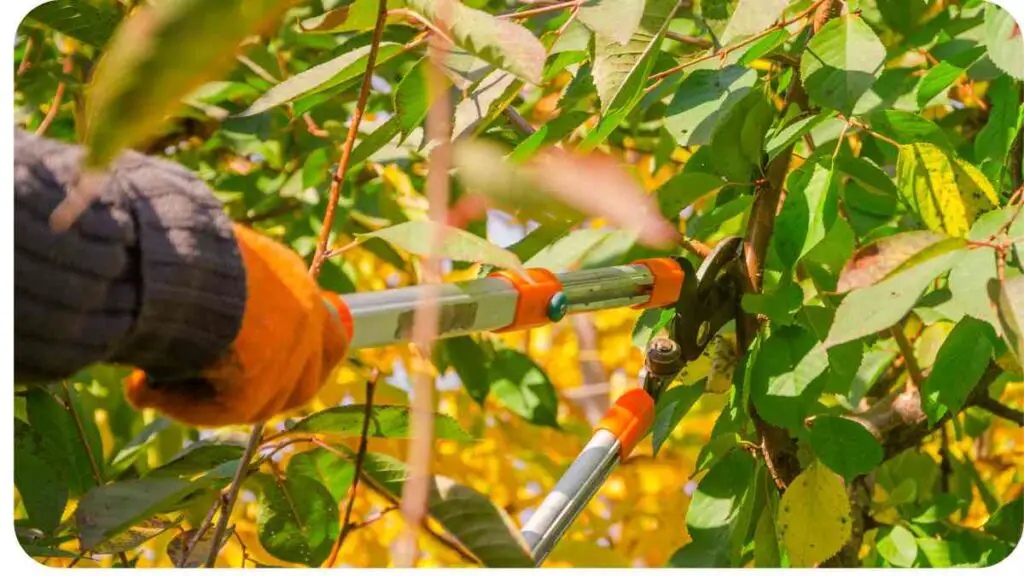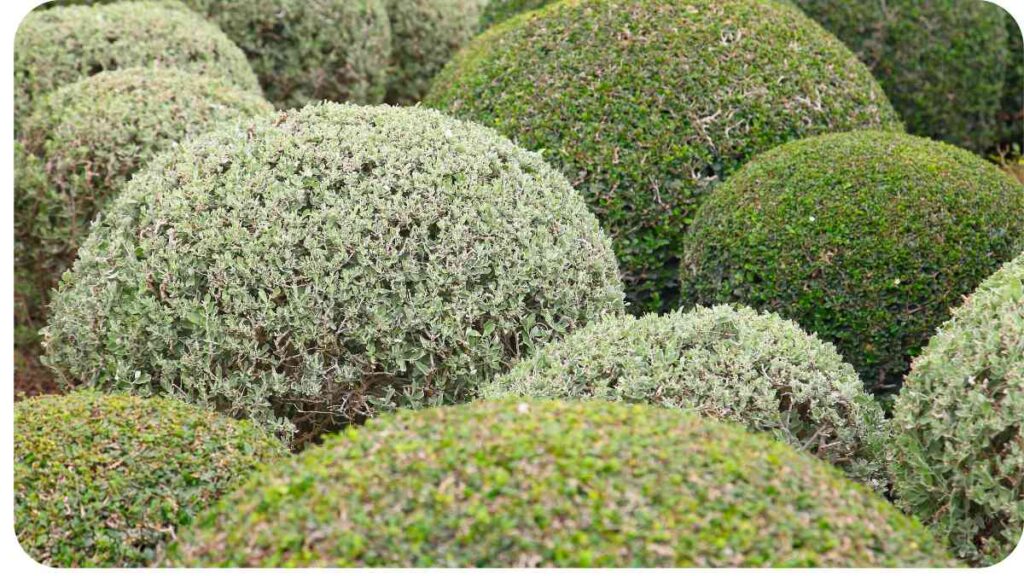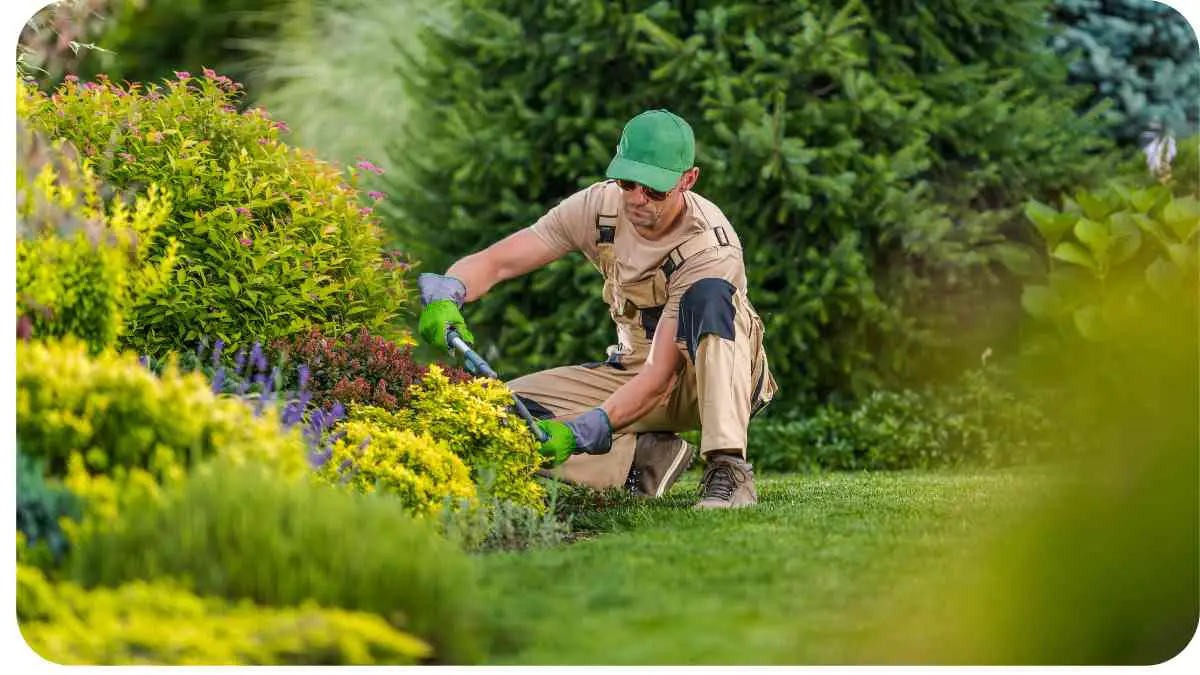Welcome to the world of gardening and landscaping, where every snip and trim can shape the beauty of your outdoor space. Pruning is an essential part of shrub maintenance, but what happens when you cross the line and over-prune your beloved shrubs?
In this article, we’ll dive deep into the dilemma of over-pruned shrubs, exploring the signs, consequences, and, most importantly, recovery tips. Let’s get started on the journey to bring your shrubs back to life.
Takeaways
- Proper pruning techniques are essential for maintaining healthy shrubs.
- Over-pruning can have detrimental effects, but recovery is possible with patience and care.
- Assess the damage to your shrubs before starting the recovery process.
- Providing proper nutrition and hydration is crucial for shrub recovery.
- Avoid common mistakes like rushing the recovery process and over-fertilizing.
- Seek professional help when dealing with severely over-pruned shrubs.
- Maintain healthy shrubs through regular care and maintenance.
- Understand the best practices for pruning and shaping your shrubs.
- Frequently asked questions provide valuable insights for shrub enthusiasts.
2. The Art of Pruning
Pruning, when done right, is like an artist’s brushstroke, enhancing the natural beauty of shrubs. It involves selectively removing branches to improve their structure, health, or appearance. While it’s an art, it’s also a science, requiring knowledge of plant growth and a keen eye for detail.
Proper pruning is essential for healthy shrubs, and it’s important to know the Dos and Don’ts of shrub pruning. Avoid common mistakes for thriving shrubs.
Table 1: Common Pruning Mistakes
| Mistake | Description |
| Over-pruning | Excessive removal of branches and foliage |
| Incorrect timing | Pruning at the wrong season can harm the plant |
| Using dull tools | Dull tools can cause jagged cuts and damage |
| Neglecting safety | Ignoring safety measures can lead to accidents |
| Ignoring plant type | Different shrubs require different pruning |
3. Signs of Over-Pruning

Before we can address recovery, let’s identify the telltale signs that your shrubs have been over-pruned. Recognizing these signs early can prevent further damage.
Table 2: Signs of Over-Pruning
| Sign | Description |
| Bare branches | Excessive foliage removal, leaving bare stems |
| Stunted growth | Shrubs fail to reach their expected height |
| Unnatural shape | Pruned shrubs lose their natural form |
| Few or no blooms | Reduced flowering due to over-pruning |
| Foliage discoloration | Leaves turn yellow or brown from stress |
4. The Consequences of Over-Pruning
Over-pruning can have detrimental effects on your shrubs, and it’s important to understand these consequences to appreciate the importance of proper recovery.
Have you over-pruned your shrubs? Learn how to care for over-pruned shrubs and nurse them back to health. Your shrubs can recover with the right care.
Table 3: Consequences of Over-Pruning
| Consequence | Description |
| Stress and shock | Shrubs undergo stress, leading to shock |
| Vulnerability | Increased susceptibility to diseases and pests |
| Delayed growth | Shrubs require time to recover and regrow |
| Reduced aesthetics | Loss of natural beauty and visual appeal |
| Flowering problems | Fewer or no blooms due to excessive cutting |
5. Assessing the Damage
To effectively recover your over-pruned shrubs, you need to assess the extent of the damage. This step is crucial in tailoring your approach to restoration.
Table 4: Assessing Over-Pruning Damage
| Assessment Factor | Description |
| Extent of pruning | How much of the shrub was pruned excessively |
| Plant type | Different shrubs have different recovery needs |
| Season of pruning | Timing plays a role in recovery potential |
| Overall health | Consider the general health of the shrub |
| Signs of stress | Check for signs like wilting or yellowing leaves |
6. Steps to Recovery
Recovering over-pruned shrubs is a process that requires patience, care, and the right techniques. Let’s explore the essential steps to bring your shrubs back to their former glory.
Avoid common shrub pruning mistakes that can harm your plants. Ensure your shrubs stay healthy by steering clear of these errors.
6.1 Pruning Correctly
One of the initial steps in recovery is to prune your shrub correctly. This means carefully removing damaged or excess branches without causing further harm.
Table 5: Pruning Correctly
| Tips for Correct Pruning | Description |
| Use sharp, clean tools | Ensure clean cuts to prevent further damage |
| Remove dead or weak growth | Identify and eliminate unhealthy branches |
| Maintain natural shape | Preserve the shrub’s natural form |
| Avoid drastic cuts | Gradual reduction of over-pruned branches |
| Prune during dormancy | Best time for pruning is during dormancy |
6.2 Providing Proper Nutrition
Recovering shrubs need proper nutrition to regain their strength and vitality. Feeding them the right way is crucial for their recovery.
Table 6: Providing Proper Nutrition
| Nutritional Guidelines | Description |
| Fertilize appropriately | Use a balanced fertilizer to support growth |
| Mulch to retain moisture | Mulching helps conserve soil moisture |
| Water consistently | Provide adequate hydration, especially in dry seasons |
| Soil testing | Assess soil pH and nutrient levels for adjustments |
| Prune to promote growth | Encourage new growth through selective pruning |
6.3 Hydration is Key
Proper watering is a key component of recovery. Adequate hydration ensures that the shrub can recover from the stress of over-pruning.
Discover why proper shrub pruning is crucial for their healthy growth. Learn how to maintain your shrubs for vibrant, thriving plants.
Table 7: Hydration Tips
| Hydration Tips | Description |
| Deep watering | Water deeply to encourage root growth |
| Mulching benefits | Mulch helps retain soil moisture |
| Avoid overwatering | Prevent waterlogged soil and root rot |
| Monitor soil moisture | Regularly check the soil’s moisture content |
| Adjust for weather | Increase watering during hot, dry spells |
6.4 Patience and Monitoring
Patience is crucial during the recovery process. Keep a close eye on your shrubs and make adjustments as needed.
Table 8: Patience and Monitoring
| Recovery Guidelines | Description |
| Monitor for new growth | Look for signs of fresh leaves and branches |
| Resist over-pruning | Avoid the temptation to prune excessively |
| Adjust care as needed | Modify your care routine based on progress |
| Be patient | Full recovery may take several seasons |
| Celebrate small wins | Acknowledge and reward signs of improvement |
7. Tools and Techniques
Understanding the right tools and techniques for pruning and caring for your shrubs is essential for a successful recovery.
Over-pruning can impact your shrubs negatively. Dive into the consequences of over-pruning and understand how to avoid it for healthier shrubbery.
7.1 Selecting the Right Tools
Table 9: Essential Pruning Tools
| Pruning Tools | Description |
| Hand pruners | Ideal for small branches and precision cuts |
| Loppers | Designed for larger branches |
| Pruning saw | For cutting thicker branches and stems |
| Hedge shears | Perfect for shaping and fine pruning |
| Gloves and safety gear | Protect your hands and eyes during pruning |
7.2 Pruning Techniques

Table 10: Pruning Techniques
| Pruning Techniques | Description |
| Thinning | Remove select branches to reduce density |
| Heading back | Cut branches to encourage new growth |
| Crown reduction | Reduce the height and spread of the shrub |
| Shearing | Shaping the shrub for a specific form |
| Deadheading | Removing spent flowers for new blooms |
7.3 Common Mistakes to Avoid
Understanding the mistakes commonly made during the recovery process is essential to prevent further harm to your shrubs.
Table 11: Common Recovery Mistakes
| Mistake | Description |
| Rushing the recovery process | Patience is key; don’t rush the healing process |
| Over-fertilization | Excessive fertilizer can harm the shrub |
| Over-pruning again | Avoid the temptation to prune too much, too soon |
| Neglecting proper care | Consistent care is crucial for recovery |
| Not seeking professional help | If unsure, consult with a horticulturist or arborist |
8. Expert Advice and Professional Help
Sometimes, it’s best to seek expert advice or professional assistance when dealing with severely over-pruned shrubs.
Table 12: When to Seek Professional Help
| Situations Requiring Expert Assistance | Description |
| Severe damage | Extensive over-pruning with little growth |
| Diseases or infestations | Pest or disease issues hindering recovery |
| Large, mature shrubs | Handling big shrubs might need professional care |
| Unique or rare species | Specialized knowledge for unique species |
| Failed recovery attempts | Multiple unsuccessful recovery attempts |
9. Case Studies: Real-Life Recovery Stories
Learning from real-life experiences can provide valuable insights into the recovery process. Here are three case studies of over-pruned shrubs making a comeback.
9.1 Case Study 1: The Tale of the Neglected Rose Bush
Table 13: Case Study 1 Details
| Details | Description |
| Shrub Type | Rose bush |
| Extent of Pruning | Severe over-pruning |
| Recovery Duration | 2 growing seasons |
| Recovery Techniques | Correct pruning, proper nutrition, consistent care |
9.2 Case Study 2: The Battered Boxwood
Table 14: Case Study 2 Details
| Details | Description |
| Shrub Type | Boxwood |
| Extent of Pruning | Heavy over-pruning |
| Recovery Duration | 3 growing seasons |
| Recovery Techniques | Gradual pruning, deep watering, mulching |
9.3 Case Study 3: The Misguided Shrub
Table 15: Case Study 3 Details
| Details | Description |
| Shrub Type | Unspecified shrub |
| Extent of Pruning | Drastic over-pruning |
| Recovery Duration | 4 growing seasons |
| Recovery Techniques | Professional assistance, gradual pruning, patience |
10. Maintaining Healthy Shrubs
Once your shrubs have successfully recovered, it’s essential to maintain their health and prevent future over-pruning incidents.
10.1 Proper Pruning Practices
Table 16: Tips for Proper Pruning
| Pruning Best Practices | Description |
| Regular inspections | Periodically check for overgrowth or damage |
| Targeted pruning | Remove only dead, diseased, or unwanted branches |
| Follow pruning calendar | Timing is crucial for different shrub types |
| Shaping for aesthetics | Maintain the shrub’s natural or desired shape |
| Prune for air circulation | Improve air flow to reduce disease risk |
10.2 Regular Care and Maintenance
Table 17: Routine Care Guidelines
| Routine Care and Maintenance | Description |
| Watering | Consistent watering based on shrub’s needs |
| Mulching | Apply mulch to conserve moisture and control weeds |
| Pest and disease control | Regular inspections and prompt treatment |
| Fertilization | Provide nutrients as needed for healthy growth |
| Soil testing | Periodic soil tests to adjust nutrient levels |
11. Frequently Asked Questions
Let’s address some common questions about shrub care and recovery.
11.1 How often should I prune my shrubs?
The frequency of pruning depends on the type of shrub. Most shrubs benefit from annual or seasonal pruning. Always follow the specific guidelines for the shrub species you have.
11.2 Can I save severely over-pruned shrubs?
In many cases, severely over-pruned shrubs can be saved with the right care and patience. However, it may take several growing seasons for a full recovery.
11.3 What tools do I need for pruning?
Essential pruning tools include hand pruners, loppers, pruning saws, hedge shears, and safety gear. The choice of tools depends on the size and type of shrub you’re pruning.
12. Frequently Asked Questions (Continued)
12.4 How can I encourage blooming in my shrubs?
To encourage blooming, make sure your shrubs receive adequate sunlight, proper nutrition, and well-timed pruning. Some shrubs also benefit from deadheading, which involves removing spent flowers to promote new blooms.
12.5 Can I use homemade remedies for pest control?
Homemade remedies can be effective for minor pest issues. For example, a mixture of water and dish soap can deter some pests. However, for severe infestations, it’s advisable to consult with a professional for targeted treatments.
13. Conclusion
In the world of gardening, the dilemma of over-pruned shrubs is a common challenge. However, with the right knowledge, techniques, and patience, you can bring your beloved shrubs back to life. Remember to assess the damage, choose the correct recovery steps, and avoid common mistakes. Seek professional help when necessary, and never underestimate the power of proper pruning and maintenance.
By following these recovery tips and maintaining healthy shrubs, you’ll not only enjoy the beauty of your outdoor space but also create a thriving environment for your plants to flourish.
Further Reading
- How to Fix an Over-Pruned Tree: Explore detailed guidance on reviving an over-pruned tree and nurturing it back to health.
- Understanding Damage from Over-Pruning: Learn about the potential harm caused by over-pruning and strategies to address it effectively.
- Rejuvenation Pruning for Shrubs: Discover the art of rejuvenation pruning for shrubs, a method to renew and restore their vitality.
FAQs
How can I tell if my shrub has been over-pruned?
Over-pruned shrubs often exhibit signs like bare branches, stunted growth, and an unnatural shape. Look for these indicators to assess the situation.
Is it possible to save severely over-pruned shrubs?
Yes, with proper care and patience, many severely over-pruned shrubs can be saved. However, full recovery may take several growing seasons.
When is the best time to prune my shrubs?
The ideal time for pruning varies depending on the shrub species. Generally, it’s best to prune during dormancy, but consult specific guidelines for your shrub type.
How do I encourage blooming in my shrubs?
To encourage blooming, ensure your shrubs receive sufficient sunlight, proper nutrition, and well-timed pruning. Some shrubs benefit from deadheading to promote new blooms.
Are homemade remedies effective for pest control in shrubs?
Homemade remedies can be effective for minor pest issues. For severe infestations, it’s advisable to consult with a professional for targeted treatments.

Hi! My name is Hellen James, and I’m a landscape designer in Los Angeles. I’ve been working with homeowners and businesses to help them improve the look of their properties for over 10 years.


